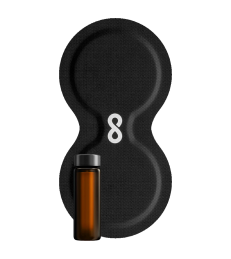
It’s Like Theranos, Except It Works.
Imagine a world where you could get over hundreds of health biomarker tests, ranging from cholesterol levels to complex genetic analysis, with just a single pinprick of blood. Now imagine a world where a bi-polar electric field is used to propel molecules across intact skin into underlying tissue, making it possible to deliver a variety of compounds directly into the bloodstream while avoiding painful and invasive needle injections.
Both pieces of innovation sound pretty amazing.
So what is the difference between the two? Well, one was a multi billion dollar scam that has now led to multiple criminal trials and has been turned into an amazing Hulu series. The other one is a very real breakthrough in medical technology that is set to completely transform how we effectively and painlessly administer compounds in the future.
Enter Iontophoresis (say that 5 times fast).
What is Ionotophoresis?
Iontophoresis, pronounced eye-ohn-toe-for-e-sus, is usually administered with large machines, cables, and enormous localized patches that use a low electric current to deliver medication through the skin, hair follicles, and sebaceous glands (small glands that keep your skin moisturized) and into the underlying tissue. The molecule you want to deliver is applied to an electrode pad with a similar charge and saline is placed on the opposite pad. Once the patch is applied to the skin, the electric circuit is complete and the compound begins to make its way through the skin.
For anyone that actually paid attention in physics class, this is where the principle of “like repels like” kicks in and repels the drug away from the similarly charged electrode pad and into the skin. Remember trying to push two magnets together at their similarly charged poles? That is exactly what is happening here.
While the technology of iontophoresis has existed for a long period of time, new innovations have led to single use patches that have a small battery that drives the electric charge compared to an enormous, antiquated machine that powers the patch.
Some of the unique benefits of Iontophoresis? Well, by delivering compounds using this very low current over a long time duration, this process allows more of the compound to actually penetrate the skin. Delivery through iontophoresis also generally reduces the symptoms that would arise from an enormous bolus dose injected directly into a blood vessel, which is how a lot of compounds are delivered today.
This leads to an effective treatment with a very low incidence of side effects and most importantly—no needles!
So what does the science say?
Studies like this one and this one have demonstrated the efficacy of iontophoresis delivery for compounds like vitamin C and dexamethasone, a corticosteroid commonly used to treat inflammation.
This other more specific study looked at the delivery of a compound using a iontophoresis patch and concluded that not only was the treatment well tolerated, but it also allowed for the delivery of “therapeutic drug levels for longer periods than currently possible.” This is important since delivering a compound over a long period of time is a key piece in mitigating uncomfortable side effects.
So if you like schlepping it all the way to your nearest clinic, wasting time in a waiting room, and then getting pricked by a needle to get your treatment, then maybe Iontophoresis isn’t for you.
But if you want to be able to get medication delivered through a painless patch that allows you to go about your day while getting treatment… well, then this might be the solution you’ve been waiting for.






